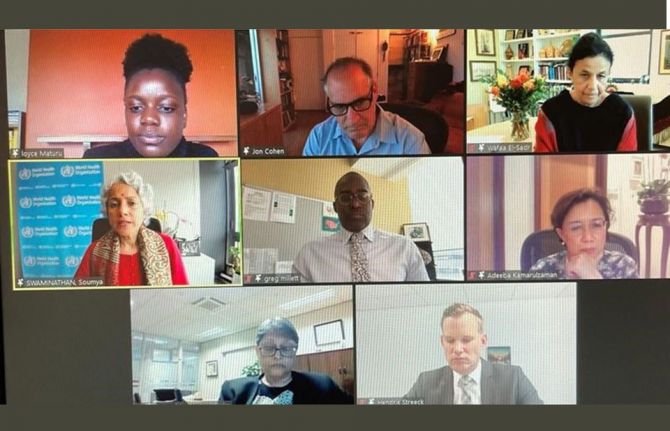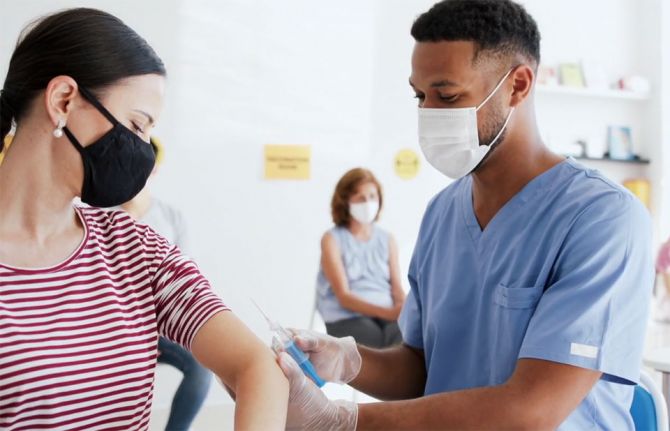
Feature Story
Microbicides: challenges to development and distribution (Part 2)
21 февраля 2008
21 февраля 2008 21 февраля 2008The biannual international microbicides conference “Microbicides 2008” will run 24 – 27 February in New Delhi under the theme “Striving towards HIV Prevention”.
The gathering will enable knowledge-sharing between microbicide researchers, public health workers and advocacy organizations and will provide a forum for the discussion of new developments in microbicide research including basic science, clinical trials and social science issues as well as discussion on behaviour, community engagement and advocacy.
In the second of a two part series looking at microbicides, we will be exploring some of these topics.
For several years, UNAIDS has insisted that the development of an effective microbicide is a public health priority and has emphasized the importance of access and affordability. However due to a lack of significant investment, the research and development pipeline has been slow and inefficient.
UNAIDS Executive Director, Dr Peter Piot said, “ The international community, including the private sector, must continue to invest in effective HIV prevention technologies that can be used by women .”
“Ensuring access to safe and effective microbicides will be of critical importance to all our prevention efforts and to our goal of stopping and reversing the epidemic.”
The cost of saving lives
The total global funding for microbicide research and development in 2006 done by the non-commercial sectors was $217 million. The pharmaceutical sector chooses to invest into the search for new antiretroviral drugs, attracted by a potentially large return-on-investment.
If there was comparable investment into microbicide research, it is thought that a safe and effective product would be on the market much sooner than a vaccine. However, as any microbicide would have to be affordable to consumers to whom it would make most difference – women living in low- and middle-income countries – the profit margins would be low. This economic reality makes microbicide research a less attractive investment.
As a consequence virtually all microbicide research is conducted by small biotech companies funded by the public sector.
Research and development pipeline
Research and development is continuing in spite of the large funding gap. More investment will be needed to bring clinical trials to completion and lay groundwork for distribution of an effective product.
As with any new drug, candidate microbicides must pass a series of rigorous laboratory tests and then a series of human clinical trials.
| What are the different phases of a clinical trial? Phase I clinical trials are the first stage of testing in humans and are designed to evaluate safety. Normally the trials are conducted in an inpatient clinic, where volunteers can be monitored closely. A group of 20-80 healthy volunteers will use the product for 1–2 weeks. Once the initial safety of the study drug has been confirmed in Phase I trials, Phase II trials are performed on larger groups of 20-300 and are designed to assess how well the product works, as well as to continue safety and tolerability assessments in a larger group of volunteers over 6–18 months. When the development process for a new drug fails, this usually occurs during Phase II trials when the drug is discovered to show no evidence of potential effect, or found to have toxic effects. Phase III studies are randomized controlled multi-centre trials on large groups (300–3,000 or more) and are aimed at being the definitive assessment of how effective and safe the drug is. Because of their large size and duration (1–2 years), Phase III trials are the most expensive, time-consuming and difficult trials to design and run. |
A range of contraceptive and non-contraceptive microbicide products are currently in different phases of development and trial including over 30 candidates in clinical trials. More than 30 others are in pre-clinical testing. However, results to date have been disappointing.
The microbicide search had an unexpected setback in February 2007 when an advanced Phase III study of a candidate microbicide Cellulose Sulfate was stopped early because women who used the gel were suspected to have a higher risk of HIV infection compared with women in the placebo group.
Earlier this week it was announced that Carraguard, a candidate microbicide that had completed large-scale Phase III trials, was unable to prevent HIV transmission. Encouragingly the product was found to be safe for long-term vaginal use making it the first microbicide Phase III trial to be completed without safety concerns. Researchers are hopeful this is a finding which will be built on.
“The next generation of antiretroviral-based microbicide products holds much promise. We do need to develop better safety biomarkers and improve measurements of adherence and we can learn much more from trials which have not resulted in an effective product,” said UNAIDS Chief Scientific Adviser, Dr Catherine Hankins.
Timing of microbicide availability
The Global Campaign for Microbicides estimated that if one of the products in advanced clinical trials proves to be effective, a microbicide could be ready for distribution in a small number of countries by the end of 2010. However, if the current sets of products do not prove effective, the timeline will be longer.
| Ethical considerations Advocates and civil society work hard to ensure that as the science proceeds, the rights and interests of trial participants and their communities are protected. In microbicide trials all women are provided with a comprehensive HIV prevention package including counselling on condom use and safe sex, supplies of free, high quality condoms and regular screening for HIV and other sexually transmitted infections. Well-run trials are vital to women’s positive perception of trial participation – participants have expressed the importance of having access to information, being treated with respect, having an opportunity to be listened to, access to HIV testing and counselling and access to condoms. It is also vital that trial designs take into account local social and community perceptions of HIV, health and sex and that participants who become HIV-positive during or after the trials have access to care and support services. UNAIDS and AVAC have published “Good participatory practice guidelines for biomedical HIV prevention trials” which sets out ten principles for community engagement throughout the research life cycle. International consensus has been reached and detailed in 1 9 guidance points on a range of topics including confidentiality, informed consent, control groups and potential harms, in the recently published UNAIDS/WHO guidance document “Ethical considerations in biomedical HIV prevention trials” |
Next steps
Next week’s Microbicide conference will be an important forum for the discussion of the challenging issues of research, financing, clinical trials and ethical considerations.
Experts will gather to hear updates on current and emerging candidate product trials and will debate a range of topics. UNAIDS Chief Scientific Adviser Dr Catherine Hankins will make presentations on the implications of the results of male circumcision trials for microbicide research and present findings from the December 2007 consultation “Making HIV trials work for women and adolescent girls”.
UNAIDS Executive Director Dr Peter Piot will address the conference closing ceremony which will be attended by politicians, policy-makers, scientists, community activists and other AIDS experts.
The London School of Hygiene and Tropical Medicine estimated by mathematical modelling that the introduction of even a 60% effective microbicide into the world’s 73 lowest-income countries which would be used by only 20% of women already in contact with health services could avert up to 2.5 million infections in three years.
With many observers confident that a successful microbicide could make a significant impact in HIV prevention around the globe, the wait is all the more frustrating, the set-backs all the more disappointing.
Microbicides: challenges to development and distr
Cosponsors:
Feature stories:
Microbicides: Why are they significant? (Part 1) (20 January 2008)
Making HIV trials "work for women" (12 December 2007)
Women and HIV research - report from meeting (11 December 2007)
Experts meet on women and HIV trials (part III of three-part series) (07 December 2007)
The role of women in HIV trials (part II of three-part series) (05 December 2007)
Meeting ethical concerns over HIV trials (part I of three-part series) (03 December 2007)
Funding estimates for AIDS research and development (30 August 2007)
Multimedia:
Listen to UNAIDS Chief Scientific Adviser Dr Catherine Hankins on Microbicides 2008
External links:
Related
 “My life’s mission is to end stigma and discrimination, and that starts with U = U”: a story of HIV activism in Thailand
“My life’s mission is to end stigma and discrimination, and that starts with U = U”: a story of HIV activism in Thailand

01 мартаа 2022 года.
 Science, HIV and COVID-19—where are we headed?
Science, HIV and COVID-19—where are we headed?

08 июня 2021 года.
 How was a COVID-19 vaccine found so quickly?
How was a COVID-19 vaccine found so quickly?

09 февраля 2021 года.
